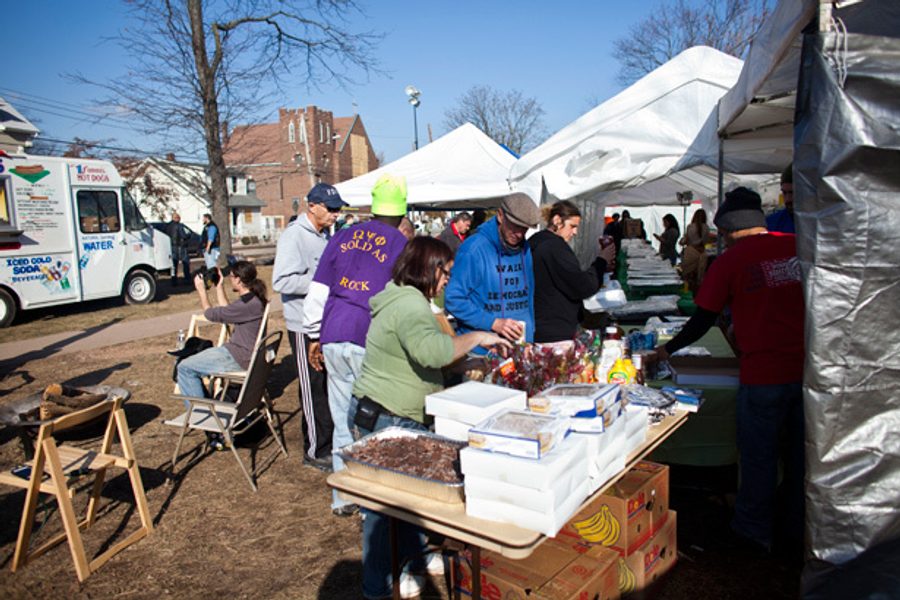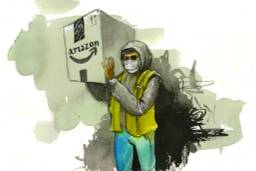
Disaster has a way of concentrating the mind. And Gotham has always had its share of it: whether it’s a slow-burning disaster like the epidemic of income inequality, the endemic scourge of police brutality and racial profiling, or the chronic deprivation of healthy food in isolated neighborhoods. Superstorm Sandy churned all of these elements of urban chaos. But in its wake, the storm has laid bare new pathways for innovations, and new frontiers for struggles against inequality.
The undercurrent of these contradictions ran through a conference this weekend dedicated to “designing a city for the 99%,” a possibility made more real and urgent in the storm’s aftermath. Urban Uprising, held at the New School and the CUNY Graduate Center (where this reporter is also a graduate student), brought together academics, legal experts, organizers and urban ecologists to broach fresh questions about organizing communities: how to harness the energy of Occupy and channel it into direct, localized campaigns; how to balance environmental renewal with economic development; and how to reorient debates on food policy away from apolitical consumer interests and toward the connection between food justice and fighting poverty.
Help keep this reporting possible by making a donation today.
The post-Sandy recovery process colored discussions of one of the main themes: “reimagining the city,” which focused on cultivation, both literal and figurative, of a new urban landscape.
David Harvey, a City University anthropology and geography scholar, has long argued that the Left must learn to organize at the level of the city. His work on the links between urbanization and capitalism helped invigorate the “Right to the City” alliance, one of the groups that organized the conference. During the conference, Harvey noted the ways in which community initiatives like Occupy Sandy are reclaiming urban space for popular struggle. “In a way,” Harvey said in an interview with In These Times, Occupy Sandy is “spreading a political message by a different route. And therefore, Occupy has not gone away. It’s moved into the boroughs… It is therefore a commitment to a different kind of lifestyle, a different kind of on-the-ground politics which in the long run may be just as important as the symbolic politics of Zuccotti Park.”
A broader political backdrop to the discussions was the looming security state that has crystallized over the past decade, putting communities under both economic and political siege. Groups like the Immigrant Defense Project and the Los Angeles Community Action Network described struggles against the militarization of policing around the country, as well as the growing transformation of local police into agents of immigration enforcement, counterterrorism and drug wars.
Harvey described the intense police presence in New York “as a part of a long process of increasing militarization and securitization of urban life which has been going on for the last 30 or 40 years. … It’s become more and more closely organized, which has a lot to do, I think, with the management of what increasingly are becoming ‘disposable populations.’”
In a panel discussion on organizing in the city, writer Kazembe Balagun reflected on how Occupy and its offshoots reflect an evolving movement culture that has both physical and political underpinnings. “In many ways these movements are illusionary, fleeting, but they are real,” said Balagun, who is also an outreach coordinator for the leftist cultural and educational Brecht Forum. “They are spheres of actual working-class power, that reimagine space. Indeed, our challenge is to move from movement spaces, to movement communities, to the revolutionary rebel cities of our dreams.”
On this theme, activists throughout the weekend made plans to promote car-free, bike-centered neighborhoods, increase urban farming, and fight foreclosures through civil disobedience. There were also calls to radically revision public space. City University geography scholar Ruth Wilson Gilmore spoke about prison abolition as a way of democratizing social space.
Given that so many New York City residents are incarcerated in remote prisons upstate, Gilmore argued that “each prison is a mini-borough,” and that incarcerated New Yorkers are essentially “long-distance migrants circulating between here and there.”
Matthew Birkhold, co-founder of Growing Roots, a new initiative inspired by the movement in Detroit to reclaim land for urban gardens, noted that New York won’t necessarily model itself on any other city (the nature of Gotham’s dense real estate landscape doesn’t lend itself to takeovers of vacant lots, for example). But the group’s organizing model has less to do with the physical environment than on efforts to construct networks of mutual aid. “Relationships can happen in any context. It’s a matter of how you decide to intentionally build them,” Birkhold said.
A breakout session on environmental issues, meanwhile, revealed critical tensions between long and short term visions for “sustainability,” an idea that is difficult to define. How do you fight climate change while ensuring that low-wage workers aren’t stiffed in the accompanying economic disruption? How do you rebuild democratically in a fraught city like New York, where public projects tend to get mired in planning gridlock and poor households sidelined by the political elite?
After Sandy exposed vast disparities in vulnerability to environmental catastrophe, all of these questions have dovetailed in the post-storm recovery. “The problems with these communities has to do with access and control of resources, and in a situation like Sandy, there’s a disruption of the normal circuits of capital,” said Casey Butcher, an organizer with the Brecht Forum.
On the other hand, displaced communities could potentially re-anchor themselves for the long term through Occupy Sandy, which is applying Occupy Wall Street tactics in direct-action humanitarian aid in traumatized neighborhoods. “Something like Occupy, in the context of providing disaster relief, has created a space for a process to unfold,” Butcher said.
For now, the rebooted Occupy movement is focusing on providing help where government has faltered (or, according to some reports, suppressed grassroots efforts). Long-term rebuilding will hinge on how government agencies interact with (or neglect) affected residents and activists.
Joel Stein, a graduate student in Design and Urban Ecologies at the New School and a facilitator of the environmental break-out session, told In These Times that whatever recovery programs or policies emerge in the wake of Sandy, the groundwork should be laid by those with a real stake in the outcome: “There needs to be space created for communities to define their sustainability goals for themselves. They’re the experts of their own lives… And so they need to be able to create that vision for themselves.”
A single storm may not shift people’s thinking about the urban environment, but the recent convergence of social and ecological crisis are shifting the city’s political ground, uprooting lives but quietly seeding new ideals in the process.

I hope you found this article important. Before you leave, I want to ask you to consider supporting our work with a donation. In These Times needs readers like you to help sustain our mission. We don’t depend on—or want—corporate advertising or deep-pocketed billionaires to fund our journalism. We’re supported by you, the reader, so we can focus on covering the issues that matter most to the progressive movement without fear or compromise.
Our work isn’t hidden behind a paywall because of people like you who support our journalism. We want to keep it that way. If you value the work we do and the movements we cover, please consider donating to In These Times.
Michelle Chen is a contributing writer at In These Times and The Nation, a contributing editor at Dissent and a co-producer of the “Belabored” podcast. She studies history at the CUNY Graduate Center. She tweets at @meeshellchen.




